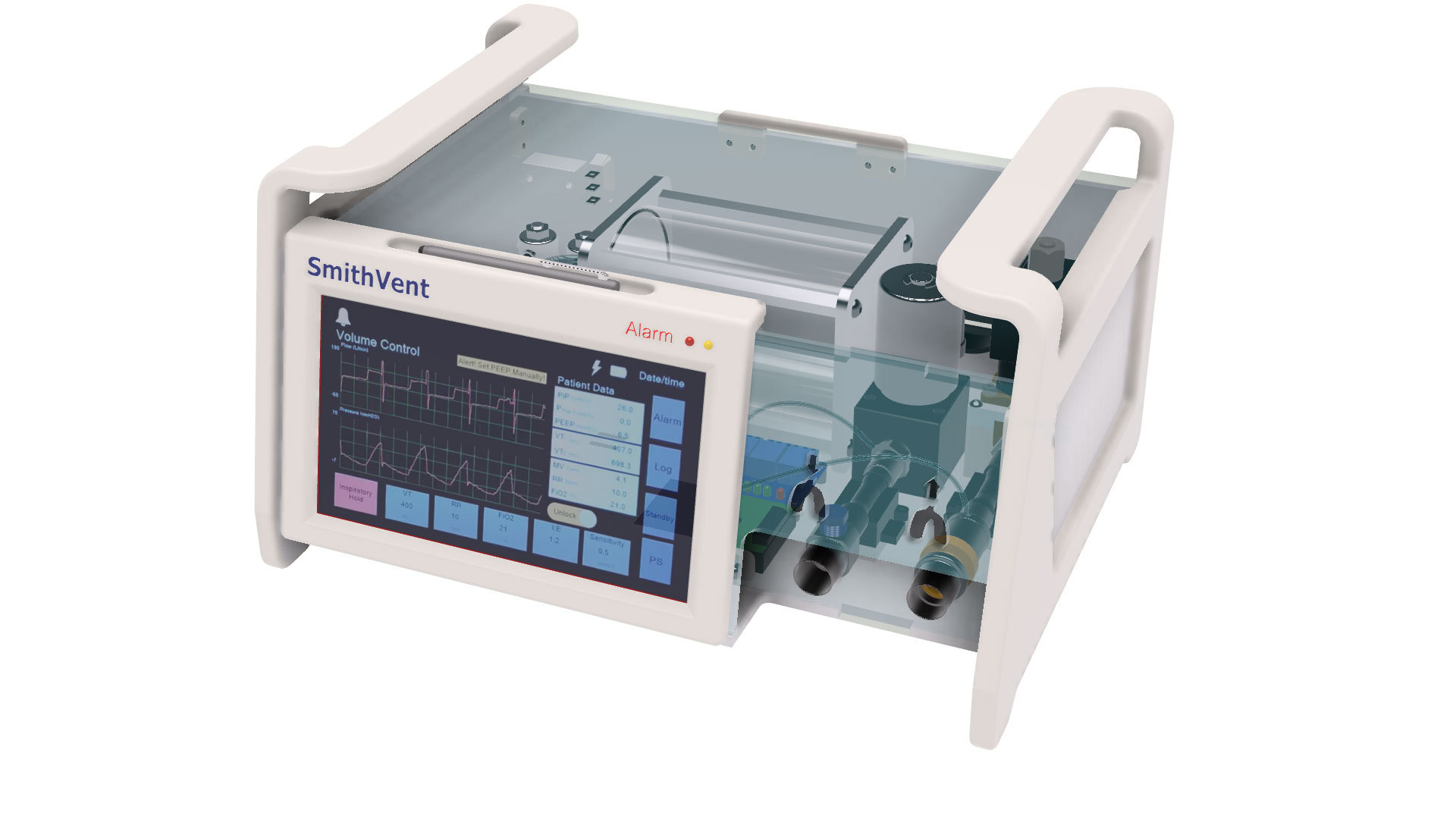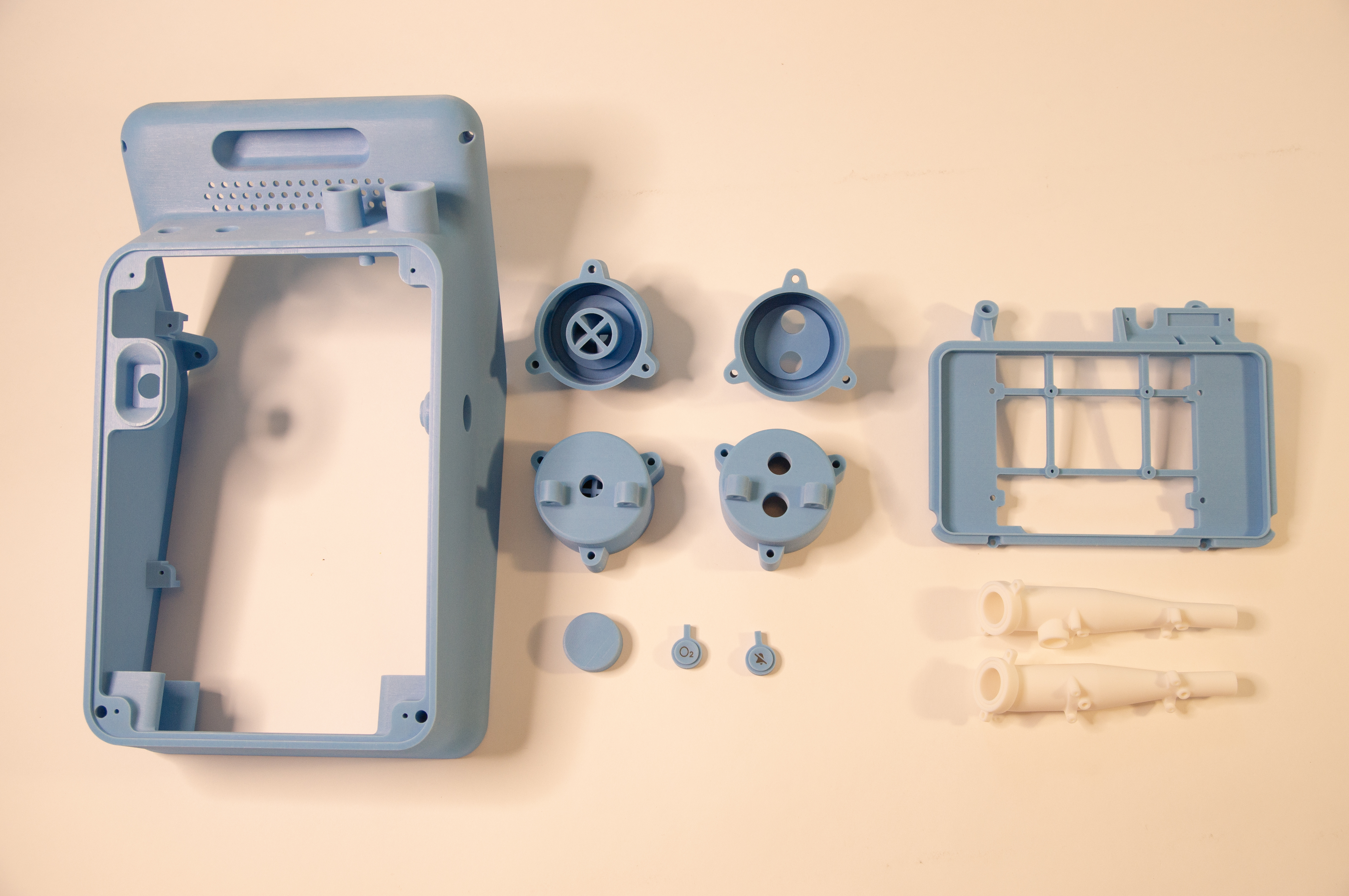A team from the Massachusetts-based Smith College has won the Covent-19 Challenge design contest with its novel “Smithvent” partially-3D printed ventilator.
Open to the public, the aim of the competition was to create a rapidly deployable, minimum viable ventilator that could address shortages caused by the COVID-19 pandemic, particularly in developing countries. Just three months after entering the contest with no previous knowledge of ventilator construction, the team’s winning design could now be deployed in Nigeria, following regulatory approval.
“In two months we went from knowing nothing to having a functional prototype,” said Susannah Howe, an Engineering Professor at Smith College. “That’s just crazy. To see that trajectory in such a short period of time, with people who are volunteering their time on top of their other jobs, is amazing and heartwarming and so rewarding.”
The Covent-19 Challenge and ventilator design
On April 1st, more than three months ago, twelve ambitious anesthesiology resident physicians from Massachusetts General Hospital launched their CoVent-19 Challenge. The group’s design competition was specifically set up in order to seek out cost-effective and easy to manufacture ventilators, and aid the developing world during the current pandemic. With more than 200 applications submitted, the general public did not disappoint.
When the 30-strong group of engineering alumnae, staff and faculty from Smith College initially applied, not one of them had any experience or understanding of ventilator design. This didn’t stop the team from creating their Smithvent ventilator, which the crew reportedly assembled for less than a tenth of the cost of traditional ventilators. Using a combination of 3D printed and off-the-shelf parts, the Smith College group reduced the amount of custom machining that was needed, and improved the system’s compatibility with other medical equipment.
The team’s ventilator enclosure, ISO fittings, and mounting blocks can all be produced using Fused Deposition Modeling (FDM) or stereolithography 3D printers. Moreover, the design is open-source, so that other researchers can produce and improve upon, the group’s winning design. By merging economical proportional solenoid valve technology with an air-oxygen mixing chamber, the ventilator meets the full set of requirements for COVID-19 devices, meaning that it could potentially go into production. In terms of next steps, the team could now develop a final product and seek final regulatory approval in Nigeria, just one of the countries that have been talking with the CoVent-19 Challenge organizers.

Among hundreds of other entrants, two other teams were also singled out for praise by the Challenge’s judges. The second-placed design was an InVent Pneumatic Ventilator submitted by a San Francisco-based team composed of staff from design firm Fuseproject and medical device startup Cionic. Assembled in less than four hours, the prototype was produced using Stratasys 3D printers, and featured a simple and intuitive human-machine interface custom-made venturi flow sensors.
Third place meanwhile, was awarded to a design by a group of dozens of engineers and healthcare workers from a group called RespiraWorks. While the team’s model uses a sophisticated blower-based ventilation system, they also allowed for simplified assembly and manufacturing, by making their design open-source. Moreover, parts used in its construction were used deliberately, so that they would be readily available from local supply chains around the world. “Patients suffering from COVID-19 require and deserve high-quality ventilation, regardless of whether they were born in a rich country or a poor one,” added Ethan Chaleff, RespiraWorks Founder and Executive Director.
Seven prototypes made it to the final, and were evaluated using a test bed to determine which design provided the best combination of performance against safety, reliability, manufacturability, affordability, and simplicity. The three winners will receive $10,000 worth of AM equipment from Stratasys, which also provided free 3D printing and a team of three application engineers, for the seven finalist teams in building their working prototypes.
When the Competition was organized in March, it was still unclear whether the United States would have enough ventilators to cope with the pandemic, but since then, attention has switched to supporting the developing world. “Our focus has since shifted to developing countries, where we’re seeing high death rates and limited resources to deal with the ravages of this new disease,” said Dr. Richard Boyer, Founder and Director of the CoVent-19 Challenge. “The test bed we developed gives us a lot of confidence in the performance of the winning prototype, and frankly there is probably tremendous value in getting other finalist designs out into the world too.”

Additive manufacturing in the COVID-19 pandemic
The response of the 3D printing community to COVID-19 has seen huge numbers of face masks and shields produced, as well as a variety of other AM innovations. Engineers, product designers, and healthcare workers from Helpful Engineering for instance, have worked with volunteers to 3D print a US Army-designed emergency ventilator. Based on the 1965 original, the team launched a fundraiser, aiming to mass-produce replicas of the “highly-manufacturable ventilators.”
3D printer and materials manufacturer Photocentric, has been awarded a contract by the UK government to manufacture over 7.6 million 3D printed protective face shields. Aimed at combating the virus in Britain, the deal will see the Peterborough-based company using its patented 3D printing technology to produce millions of items of PPE every month.
Italian supercar manufacturer Lamborghini meanwhile, has directed its in-house 3D printing facilities to produce medical equipment, in order to fight the COVID-19 outbreak in Italy. Using its R&D department, the carmaker is supporting medical respirator company SIARE Engineering International Group, to design and manufacture lung simulators.
You can now nominate for the 2020 3D Printing Industry Awards. Cast your vote to help decide this year’s winners.
To stay up to date with the latest 3D printing news, don’t forget to subscribe to the 3D Printing Industry newsletter or follow us on Twitter or liking our page on Facebook.
Looking for a job in the additive manufacturing industry? Visit 3D Printing Jobs for a selection of roles in the industry.
Featured image shows the Smith College team’s “Smithvent” ventilator design. Photo via BusinessWire.



